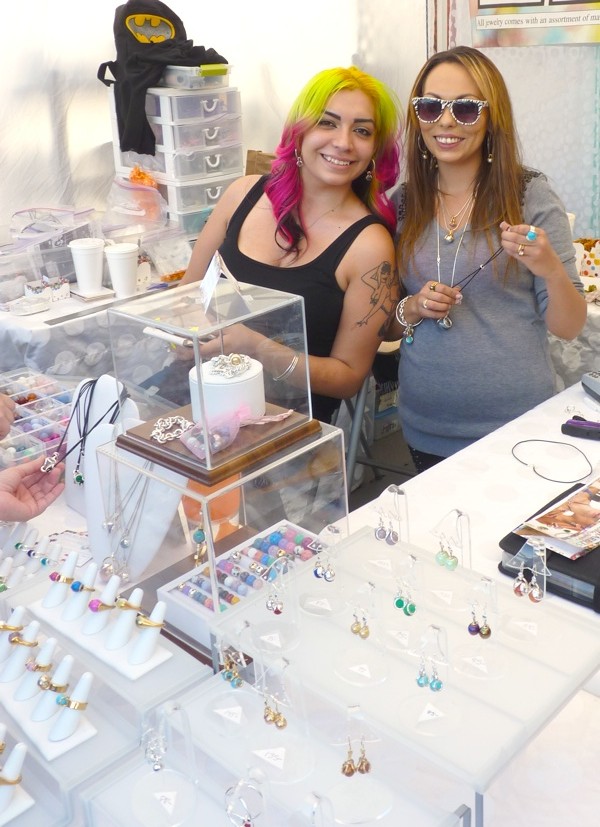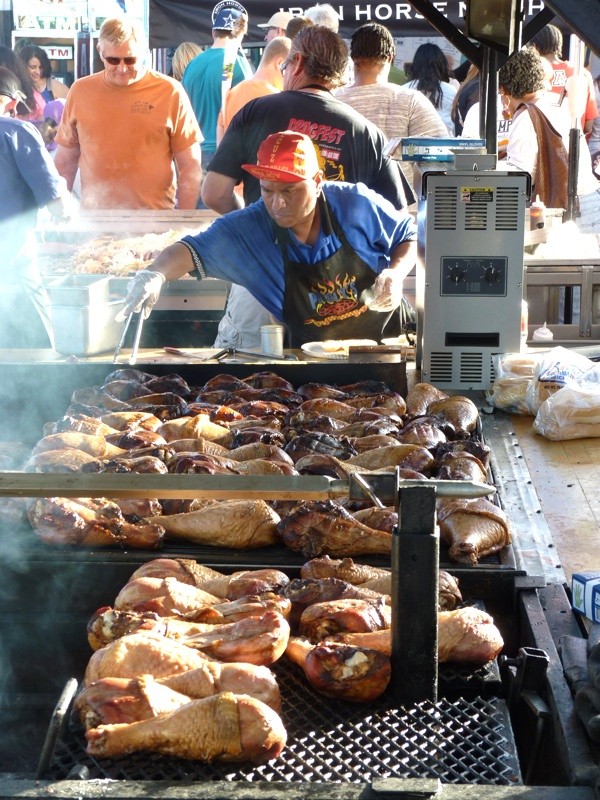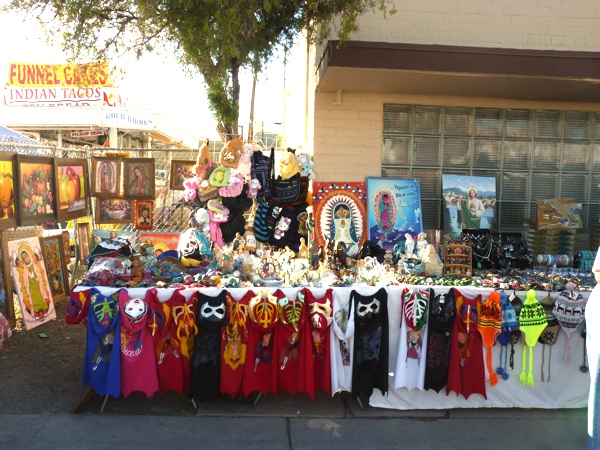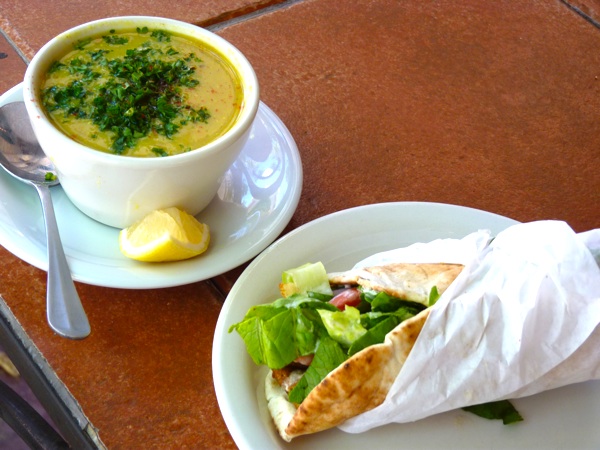The Wild Garlic Grill hits the mark with delicious French-inspired cuisine
 It’s a trait I inherited from my mother, whose aesthetic taste is unrivaled: the moment I enter a restaurant I start to pass judgment — way before I’ve seen the menu or my waiter — based on the decor. Mom-and-pop joints and dives have it pretty easy with me: if I expect cracked linoleum and paper napkins, I adjust my pickiness to match.
It’s a trait I inherited from my mother, whose aesthetic taste is unrivaled: the moment I enter a restaurant I start to pass judgment — way before I’ve seen the menu or my waiter — based on the decor. Mom-and-pop joints and dives have it pretty easy with me: if I expect cracked linoleum and paper napkins, I adjust my pickiness to match.
The Wild Garlic Grill, however, shoots for refinement — and doesn’t quite hit the mark. The ocotillo-ribbed ceiling provided a rustic warmth, and there were a couple of vibrant, good-looking oil paintings on the walls. But the heavy, patinaed frames on the blackboards and mirrors looked tawdry, the “butcher paper” on the tables looked liked it should have come with crayons, and the bar was cramped and cheap-looking. Unfortunately, sometimes it’s obvious when a restaurant doesn’t hire an interior designer.
The good news: as soon as my dinner came out, the decor was the last thing on my mind. The food was delicious. Chef Steven Shultz, an Arizona native and a veteran of the state’s restaurant scene, is the culinary muscle behind Wild Garlic Grill. His French-influenced culinary background, fused with a more laid-back California vibe, is what makes Wild Garlic Grill a success.
Both of my meals began with an appetizer or two. Although the fondue lacked the gooey consistency of its classic forebearers — it was more like cheese sauce — my dining companions and I polished it off happily. Mussels with garlic and tomatoes on my second visit were delicious, but the restaurant had run out of bread. Nothing to sop up the savory beurre blanc sauce at the bottom of the bowl! I wanted to dash out to a bakery, or dispatch our waiter. Our meal was marred, though definitely not ruined, by this shortage.
The highlight of my dinner came in a large, shallow bowl — so reminiscent of a Moroccan tagine that I found myself resisting the urge to eat the succulent lamb with my hands. It was the night’s special: braised lamb shank in a rich and comforting burgandy wine sauce, redolent with warm spices and accented with onions and mushrooms.
Two fish dishes also showcased the kitchen’s talent: a tilapia special served with a crisp salsa (heart of palm, avocado, cilantro, and more), and grilled salmon with tomato-spiked risotto and a beurre blanc sauce.
A vegetable side of the evening accompanies each dish at Wild Garlic Grill. The first night’s vegetable medley included bell peppers, chard, and, oddly but not unsuccessfully, cooked cucumber. A mix of sautéed kale, zucchini, and Brussels sprouts on my second visit was too salty for me. Still, it added a pleasing burst of color to my meal — a delicious but incredibly rich linguini bolognaise with braised beef, pork, and veal that would have easily been enough for two hungry carnivores.
The restaurant features an entirely adequate wine selection and a small, somewhat bizarre cocktail menu featuring items such as a Smurf-inspired blue martini and a savory “sangria” that sounds more like a Bloody Mary. One of my dining companions tried the Summer Day, a drink made with muddled basil and cucumber — delicious, but misplaced on a drink menu that should have had pairings better suited to the complex, savory meals that Wild Garlic Grill offers.
The service at Wild Garlic Grill is a bit harried, and at moments the timing is off. The wait staff is warm and accommodating, however, and as time goes on the staff will no doubt learn the rhythms of this still-new restaurant. And next time I visit for a great meal, I’ll avert my eyes from those heavy-framed mirrors and simply enjoy some delicious food.
The lowdown:
How much? $$ – $$$ (entrees average between $10 and $20)
Who goes? Attracts a more mature crowd; mostly groups of friends or couples.
What’s the vibe? Classy yet inviting.
Is it worth it? Fantastic food for the price — definitely worth a visit.

 Chicken And Waffle Experience Underwhelms
Chicken And Waffle Experience Underwhelms






 The Cup Café is the place to be in Tucson on Sunday mornings, and there is, accordingly, a substantial wait time for a table. In Hotel Congress’s own words, however, “The build-your-own Bloody Mary bar helps pass the time quickly.” Indeed, this creatively-designed bar, situated in the lobby of Hotel Congress and open exclusively on Sunday mornings from 10- 2, is even a destination in and of itself. Explains Matthew “Cheeks” Talavera, one of the bartenders you’ll regularly find at Hotel Congress at the Sunday bloody bar: “It’s not just about wasting time before you get a table at the Cup.”
The Cup Café is the place to be in Tucson on Sunday mornings, and there is, accordingly, a substantial wait time for a table. In Hotel Congress’s own words, however, “The build-your-own Bloody Mary bar helps pass the time quickly.” Indeed, this creatively-designed bar, situated in the lobby of Hotel Congress and open exclusively on Sunday mornings from 10- 2, is even a destination in and of itself. Explains Matthew “Cheeks” Talavera, one of the bartenders you’ll regularly find at Hotel Congress at the Sunday bloody bar: “It’s not just about wasting time before you get a table at the Cup.”













Also find us on...